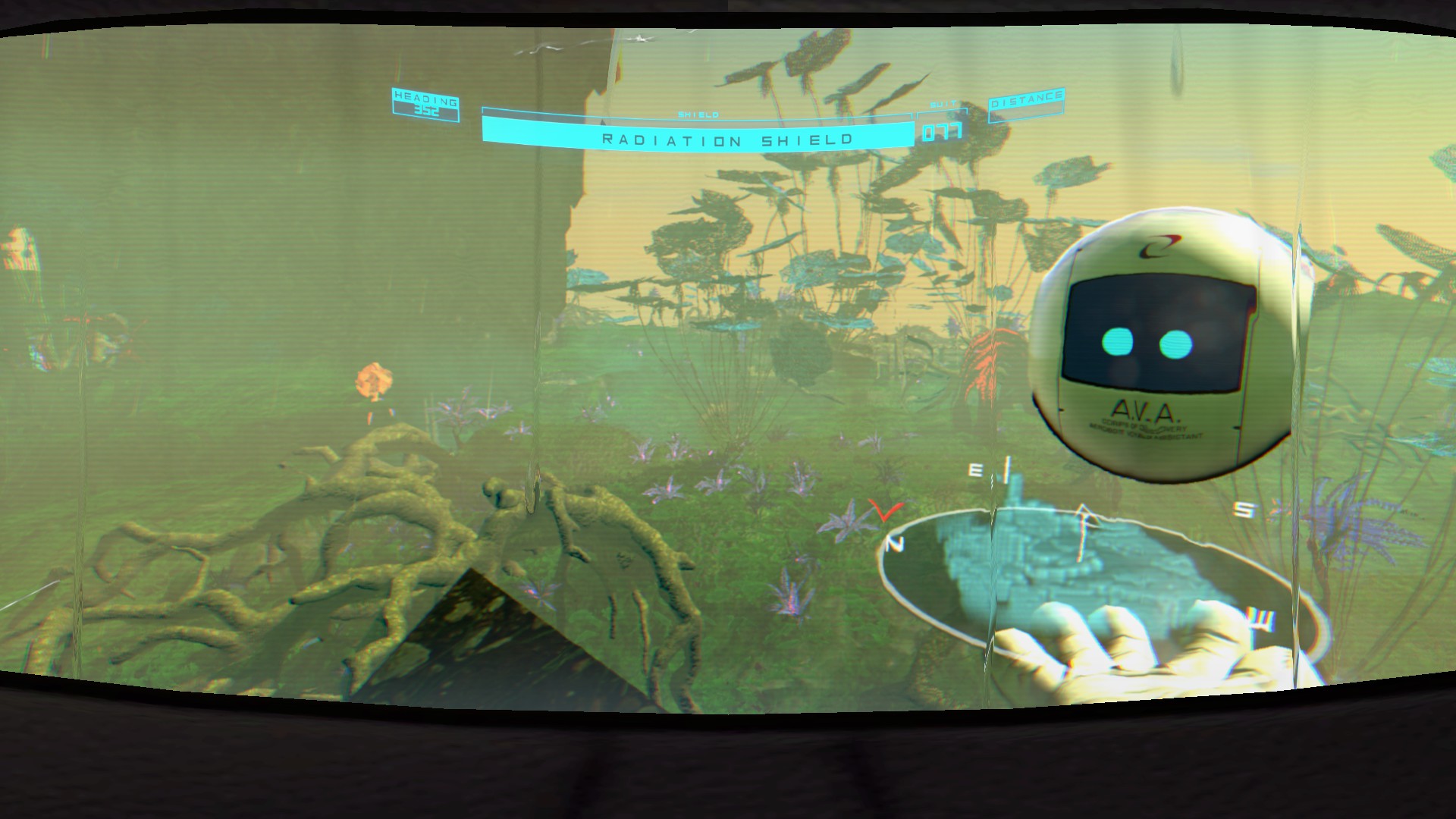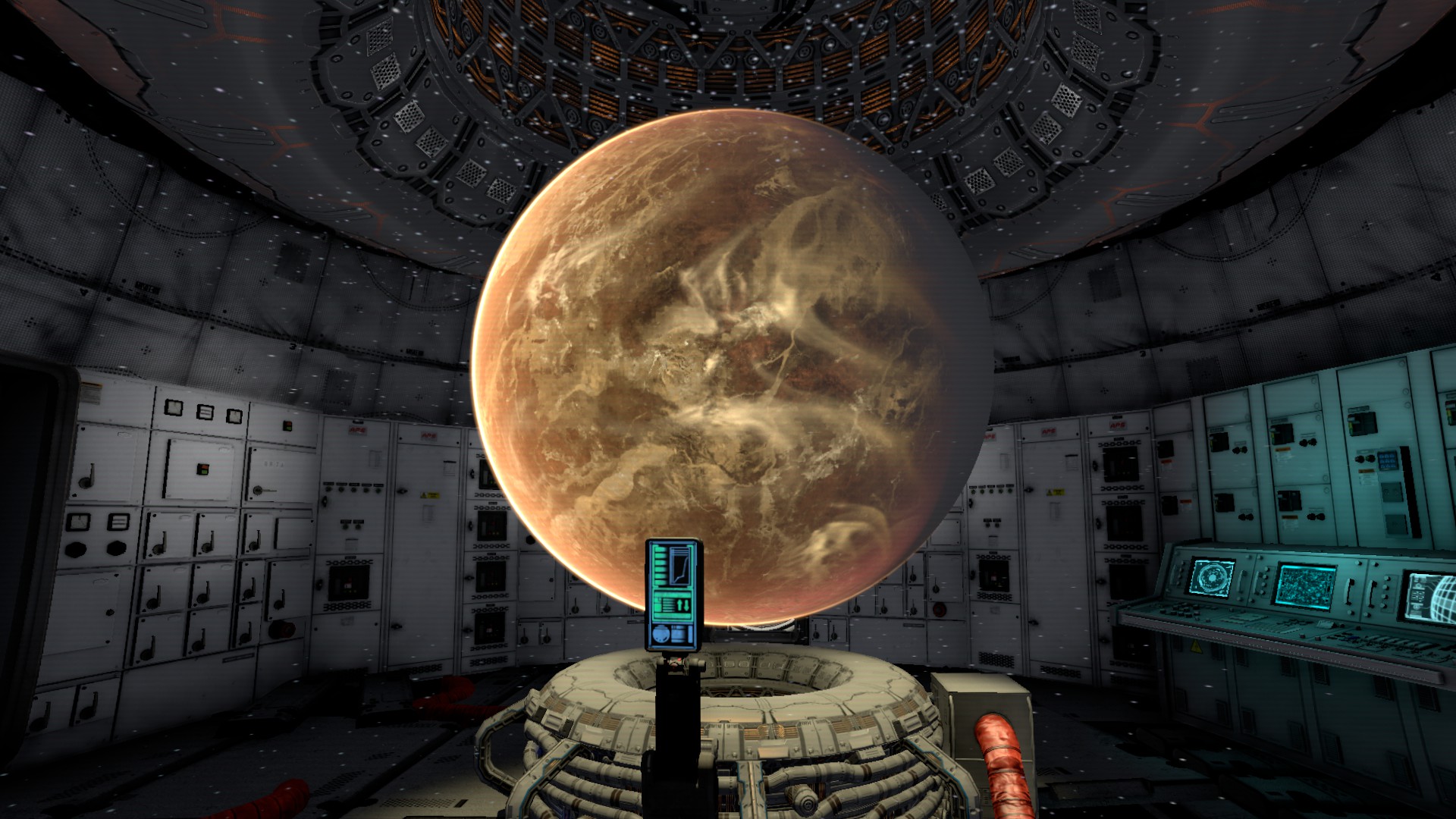Search
[{{{type}}}] {{{reason}}}
{{/data.error.root_cause}}{{{_source.title}}} {{#_source.showPrice}} {{{_source.displayPrice}}} {{/_source.showPrice}}
{{#_source.showLink}} {{/_source.showLink}} {{#_source.showDate}}{{{_source.displayDate}}}
{{/_source.showDate}}{{{_source.description}}}
{{#_source.additionalInfo}}{{#_source.additionalFields}} {{#title}} {{{label}}}: {{{title}}} {{/title}} {{/_source.additionalFields}}
{{/_source.additionalInfo}}Corpse of Discovery (PC)

Corpse of Discovery
Developed By: Phosphor Games
Published by: Phosphor Games
Released: August 25, 2015
Available On: Windows
Genre: First-Person Exploration
Number of Players: 1
Price: $7.99
Thank you Phosphor Games fors ending us this game to review!
As a medium of storytelling, video games are in a unique position to tell a tale bolstered by player interaction. Even without the potential for branching paths and different outcomes, a video game story that can mesh with its gameplay offers something potentially more memorable than just the story itself. The so-called “walking simulator,” a relatively recent genre, tends to swing heavily on the side of the narrative, often at the expense of the actual “game” part of “video game.” Occasionally, however, whether by design or by accident, a walking simulator can have its gameplay overshadow its story; Corpse of Discovery is one such example.
A first-person exploration game, Corpse of Discovery has you assume the role of an unnamed Major in the semi-titular Corps of Discovery, a space-faring organization dedicated to exploring and cataloguing unknown planets. Stranded on the planet Tellurus after a heavy spaceship landing, the Major sets out to finish his mission, collect his payday, and return home to his family – assuming the Corps even knows he’s marooned.
The basic gameplay is just that: the Major can walk, sprint, and jump as he moves to various indicated locations inside the home base and on the planet proper. To start, those three options, as well as a double-jump, are all you have available. Later, the game changes it up a little by giving you some new equipment as you progress – namely, a handheld holo-map that replaces your otherwise ever-present mission indicator, and a limited-use jetpack. Tellurus has low gravity, so the Major’s jumps cover a lot of distance and make platforming simple and enjoyable. Each set of tasks you complete on the planet ends with the Major passing out and reappearing at the base, only to find a new mission, a messier dwelling, and a radically transformed planet await him – whether it’s a dusty Mars-like wasteland or a lush rainy biome, he’s still on Tellurus and there’s still things to be done.

Strong Points: Looks great; more compelling gameplay than your average walking simulator
Weak Points: Predictable, unsubtle story; major graphical pop-in; some stability issues
Moral Warnings: Unsettling imagery; brief bouts of severe language; a neutral (if cynical) take on religion
If the gameplay ended there, it wouldn’t be much of a game; thankfully, there are a few mechanics that make it much more engaging. While the planet itself gets more and more difficult to traverse with each variation, with natural barriers and dangers cropping up with greater frequency, the game also introduces enemies of a sort. After the first planet, the Major begins being hunted by giant, pitch-black, nigh-indescribable monsters that glide through the sky, projecting a searchlight out of their single eye. With no ability to combat them, and with their tendency to congregate around your destination, avoiding them becomes your main challenge. The game thus becomes a balancing act of avoiding the monsters and platforming around the planet, trying to find the best and safest route to your destination.
The sound design is especially crucial to making the monsters feel like a threat, and is spot-on in that regard. While the music, usually in the form of a soft music box-style lullaby that’s underscored with a hostile droning, certainly adds to the tension, the noise the monsters make is especially effective. Their low-toned chaotic rumblings and wordless whispers start quiet but can be heard from quite far away; if one’s on top of you, it’s practically all you can hear. The Major moves quite fast normally, so the sprint option is mostly to get away quickly – he’ll start loudly panting almost immediately, which only heightens the sense of anxiety when combined with the monsters’ noises. Altogether, the game borders on being survival horror, and makes the gameplay more than the sum of its parts, even if the main premise isn’t exactly interesting.
Oddly enough, especially in a game that bills itself as a walking simulator on the Steam page, its story brings down its serviceable gameplay. The narrative is presented in two ways: examining objects will flash unspoken subtitles on the screen detailing what the Major is thinking; and each main objective reached will draw comments from your floating, spherical robot companion AVA. The overall plot is rather predictable, and the lessons you’re meant to learn on each planet is presented with all the subtlety of a sledgehammer. AVA goes on long-winded lectures at the drop of a hat, and her dry, cynical tone can get overbearing real fast. Her voice acting is great – all of the voices in the game are high quality, in fact – but the constant one-sided conversations quickly grow old. In case you still don’t grasp the moral of the section from AVA’s ramblings, it’s presented to you as a cover of a book in your room at the start and as an out-of-context subtitle at the end of each mission.
In general, the game tells more than it shows. Each object carries a subtitle to plainly state what significance it has to the Major – for instance, optional objectives between each main one will have the Major hallucinating something, like a pizza or his bedroom on Earth, and rather than letting you extrapolate its meaning, the Major will tell you what it means to him. This will also get you berated by AVA, making this game one of the likely few exploration games on the market that will rebuke you for exploring it. By the end of the game, there are no more mysteries to think about, as everything has been explained – even the monsters, whose presence aren’t acknowledged by the Major or AVA outside of their introduction, are given a lengthy explanation, which is made even more unnecessary by the visuals at the time. In addition, there are a few spelling and grammar errors – the most egregious being, upon finding some cakes lying around, the Major declares his fondness for “deserts.” Even with its somewhat overdone but very salvageable concept, the story over-explains itself, and leaves you with very little to think about when all is said and done.

Higher is better
(10/10 is perfect)
Game Score - 70%
Gameplay - 10/20
Graphics - 8/10
Sound - 9/10
Stability - 3/5
Controls - 5/5
Morality Score - 82%
Violence - 9/10
Language - 5/10
Sexual Content - 10/10
Occult/Supernatural - 7/10
Cultural/Moral/Ethical - 10/10
This is more of a shame considering how well done the visuals are. Each variation of Tellurus is beautiful in its own right, and the way the monsters look and move only add to their imposing presence. There are little details to enjoy as well: the most impressive might be the rain on the second planet, which streams down your view constantly but also splatters on your helmet if you look up. The main portions of the planets are not randomly generated, which is a boon in that it allows for coherent and consistently-traversable geography, though it does diminish the replay value. To the game’s credit, there are no artificial barriers in the form of invisible walls or insurmountable pits; you can walk in one direction forever, enjoying location-appropriate randomly generated landscape that can still hold some pleasant surprises.
This does come with a tradeoff, mainly in the form of pop-in; even at the highest setting, portions of the landscape will constantly spring into view as you move around. The game doesn’t have to load very often, but it will freeze everything for at least five seconds when it does. Picking up the holo-map for the first time plunged the mostly-stable framerate into the single digits for a good half-minute, though it didn’t happen later in the game or on a replay. Finally, and strangely, opening the menu with the escape key, then closing it with escape rather than the “return” option, will leave the mouse cursor on the screen until you left-click. It all might be a good price to pay for such impressive graphical strength, but it’s a price nonetheless.
There are a fair few moral warnings about this game as well. The monsters make for some unsettling imagery, along with a few frightening-looking alien creatures. One planet variation has you looking for the corpses of other Corps members, with various effects applied on a few that look like they’re being eaten by insects, though they’re still in their fully-intact spacesuits. AVA goes on a profanity-laden rant near the end of the game, with F- and S-bombs thrown around. The story touches on some heavy themes, death being the principal subject. There is also a section on religion – while neutral, with the moral coming down to encouraging thorough examination of your beliefs, AVA’s typical cynicism makes the tone appear more hostile than it really is. The main theme of the game is the importance of family, and indeed the well-being and happiness of his family is the Major’s ultimate goal, but again, it’s presented a little more aggressively than it needed to be.
Overall, Corpse of Discovery comes closer to being survival horror than a walking simulator; if presented differently, it could have been a solid, thought-provoking experience. As it stands, however, the clumsily-told story interferes with the rich visual and aural information; sometimes, less truly is more, especially in storytelling. Still, there’s a decent game to be found in here that might be worth looking into during a sale, as long as those moral issues don’t scare you away.
-Cadogan








